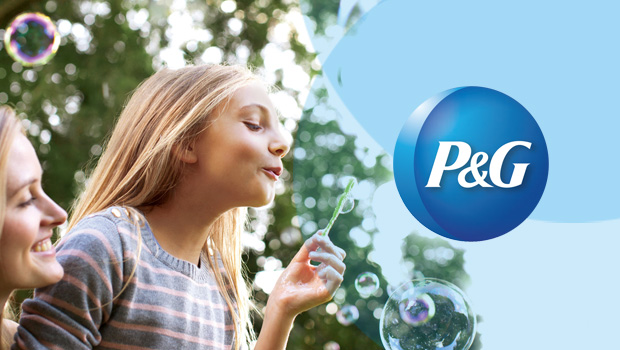Reporter:Since you joined P&G in 1977, how has the marketplace changed?
記者:自從您1977年加入寶潔以來,市場都發生了怎樣的變化呢?
Lafley: First, the power has shifted from the manufacturer and the retailer to the consumer. Consumers are now the boss. The marketplace is pretty transparent. It is a great time to be a consumer. Second, the choice of retail experiences is greater. When I was growing up, there was a Wool worth's, a Grand Union and maybe a comer drugstore. Now consider all the choices we have in retail format and experience. In our industry, it is very Darwinian. The successful retailers are winning big and the weak retailers are going bankrupt. There is a concentration of retailing power. Third, innovation, including design, is increasingly important because technologies can be copied so easily. When I joined P&G, if we had a new technology, we could ride it for a decade and be pretty sure that our competitors would not be able to imitate it or come close to it. In today’s global marketplace, your competitor can get hold of or copy the technology quickly. What really differentiates you in the end is the design and the brandSo while we have improved Tide 50 or so times in 50 years, with new chemistry and technologies, what has built the promise and trust is the Tide brand and design equity.
雷富禮:首先,權力由制造商和零售商手里轉移到了消費者手里,消費者現在是上司。市場變得很透明,所以現在做一名消費者是一件很好的事。第二,現在人們有更多的選擇機會了。我小的時候,只有個伍爾瓦斯公司,有個大聯邦,還有一個轉角藥店。現在再來想一想我們在零售形式和體驗上居然有了這么多的選擇。在我們的產業中,達爾文主義很明顯,即成功的零售商做得越來越大,而失敗的零售商卻只能面臨破產的困境,這就是零售力量集中的體現。第三,因為技術是很容易被拷貝的,所以創新,包括設計的創新,變得越來越重要。在我剛加入寶潔的時候,如 果我們發明了一項新技術, 那我們可以駕馭它10年,并且確信我們的競爭者不會模仿或趕上我們,因為他們沒有這種能力。在現今全球化的市場環境中,你的競爭者完全有能力很快地掌握或者拷貝你的新技術。而最終區別你們的就是設計和品牌。所以在過去50年里,利用新的化學作用和新技術對汰漬進行了大約50次的改善之后,汰漬品牌及其設計權益已經建立起了品牌承諾和對此品牌的信任。

Reporter:Does P&G have any sort of environmental philosophy?
記者:寶潔公司有什么環境宗旨嗎?
Lafley:We have a sustainability strategy which is posted on our website. We are leaders in that area and we definitely pay. a lot of attention to the recyclability of our packaging, for example.
雷富禮:我們制定了策略來維持環境的可持續發展,并把這張貼在我們的網站上。在那個領域中我們是領頭人,因此我們肯定要很關注增加包裝的可回收性。 記者:您公司內部的設計團隊有多大?雷富禮:在內部我們有大約80位設計師,他們中的1/3到1/2都來自于設計代理處或者是一些大的設計項目中。我們現在也與很多設計代理商合作,比以前的還多,他們大多是世界上最好的設計代理商。
Reporter:How large is your in-house design staff?
記者:為什么您既用公司內部的設計師,也用來自外部設計代理商的設計師呢?
Lalley: We have about 80 inside designers, about a third to a half of them we hired from outside design agencies and great design programs. We are also using more outside design agencies than we ever have before, most of the best ones in the world.
雷富禮:這正如我們的廣告和公關部。盡管我們是世界上最大的品牌公司之一,但公司的廣告并不是我們自己做的。代 理商會吸引很多世界級的人才幫他們做事,而這對于我們來說就更有難度了,因為那些世界級的人才往往都想跨產業、 跨公司、跨品牌地工作。在設計界也是一樣。偉大的設計師也希望跨越不同的產業和品牌進行設計。所以設計公司中會吸引很多世界上最優秀的設計師。
Reporter:Why are you using a mix of inside and outside designers?
記者:那公司內部設計員工的主要任務是什么呢?
Lafley:Well, it is just like our advertising and public relations agencies. Although we are one of the world's largest branding companies, we will never do our own advertising. An agency is going to attract world-class creatives. It is harder for us to do that because world- class creatives want to work across industries, across companies and across brands. The same is true in the design world. Great designers like to design across different industries and across different brands, so design firms will attract the best designers in the world. Reporter: What is the role of the in-house design staff? Lafley: In-house, we are recruiting people who have design experience and skills and who can be good design facilitators for us to connect the right outside design firm with the right brand and get the right strategy in place.
雷富禮.我們招募的內部設計員工都有設計經驗和技巧,他們很好的協助我們,使我們能夠將品牌與合適的外部設計公司進行合作,從而采用最適合的戰略。
Reporter:We heard that you have also established an outside design board at P&G.
記者:我聽說您還在寶潔成立了一個外部的設計委員會。
Lafley:Yes, we meet with the board three times a year. They help to evaluate and critique where we are going with design in our established businesses and with upstream innovation.
雷富禮:是的,我們每年與這個委員接觸3次,他們幫助我們來評估和評價,我們在已創建的品牌中的設計和創新。


